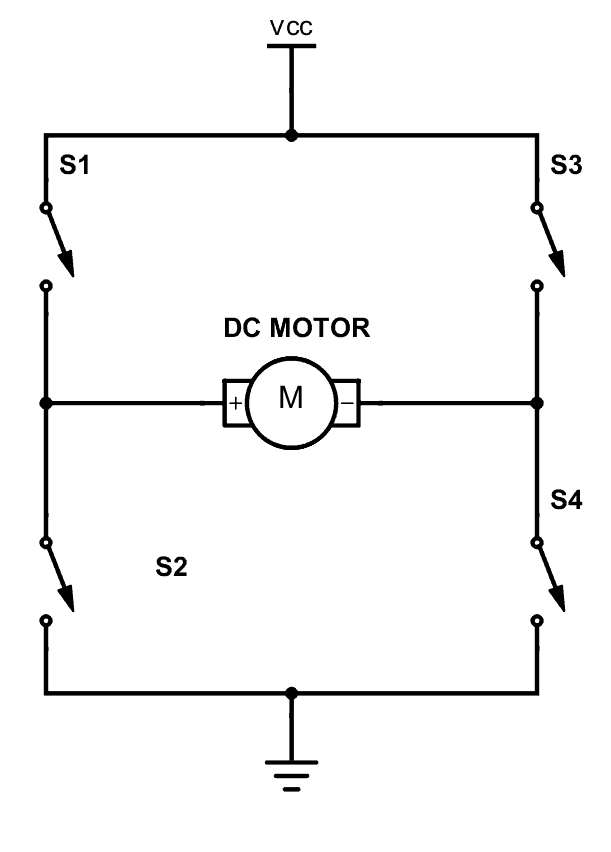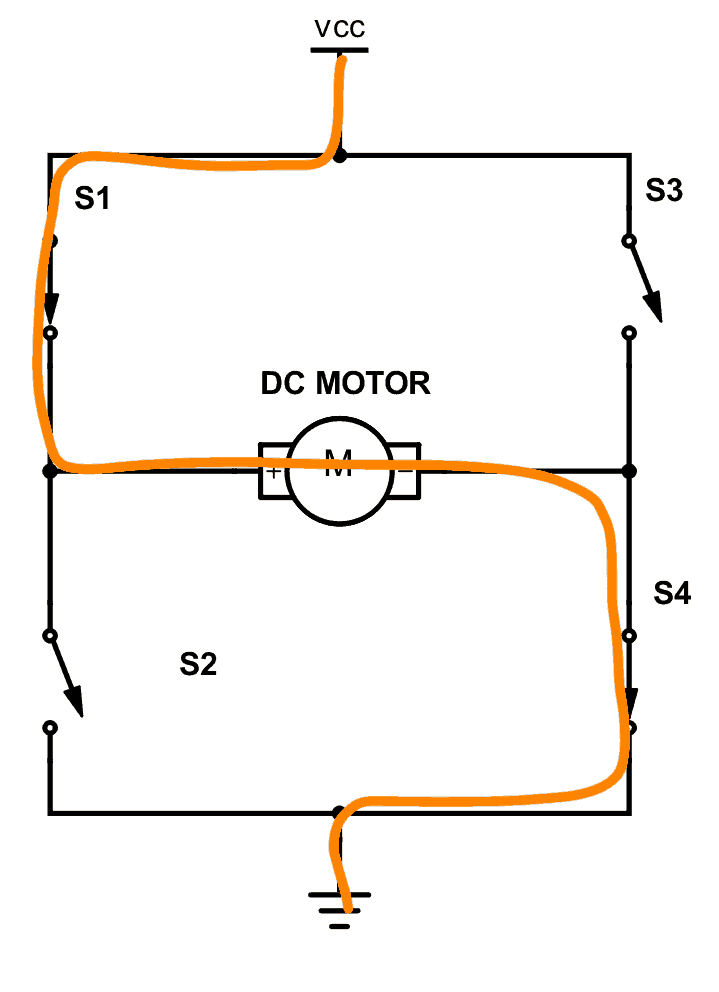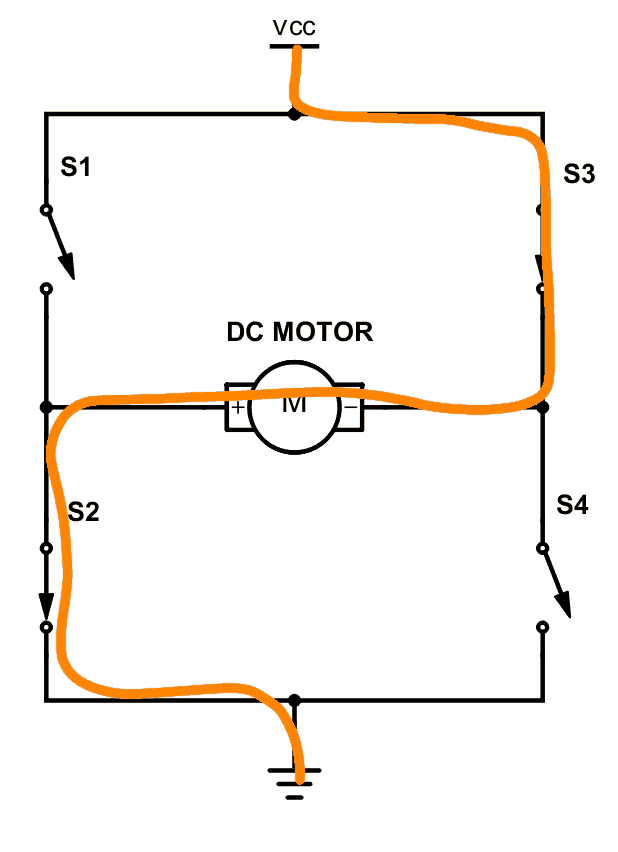
A couple of weeks ago I attended a dinner with friends where there was a model train that would bring small shots of Aquavit (traditional Nordic liquor) around the table.
I was chosen to drive the train, which I enjoyed very much.
The train used a DC motor and it was possible to go both forward and backward.
How does that work?
A DC motor spins either backward or forward, depending on how you connect the plus and the minus. So one way of being able to go back or forth is to use mechanical switches, like this:
 |
If you close switches 1 and 4, you have plus connected to the left side of the motor and minus to the other side. And the motor will start spinning in one direction.
 |
If you instead close switches 2 and 3, you have plus connected to the right side and minus to the left side. And the motor spins in the opposite direction.
 |
And that's how H-bridges work. Just that they're built with transistors instead of mechanical switches:
 |
Keep On Soldering!
Oyvind @ build-electronic-circuits.com
PS! Are you into electronics and need some guidance to get to the level you want to be - here are two ways I can help you get better at electronics:
- Ohmify is for people like you who are interested in electronics and want to learn skills like soldering, circuit design, Arduino, and circuit board design - while also building practical projects along the way.
- My eBook Fun Circuit Experiments with Sound and Light is a short book where you'll learn basic electronics through experiments. If you're new to electronics, this is the perfect place to kickstart your learning.
- Get link
- X
- Other Apps
- Get link
- X
- Other Apps
Comments
Post a Comment